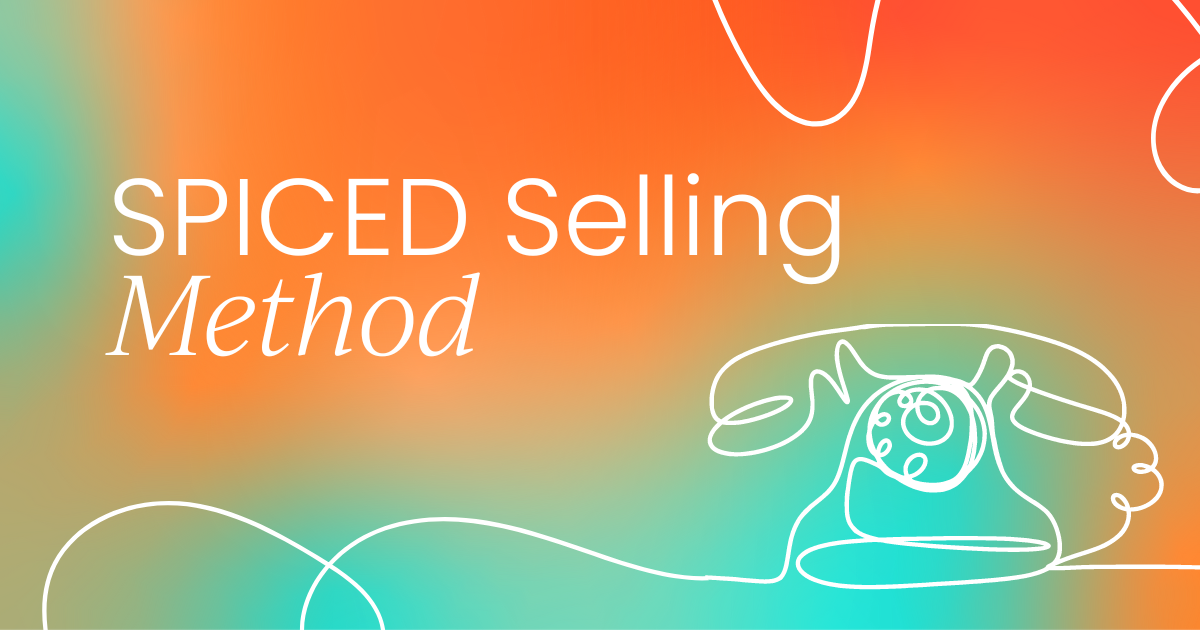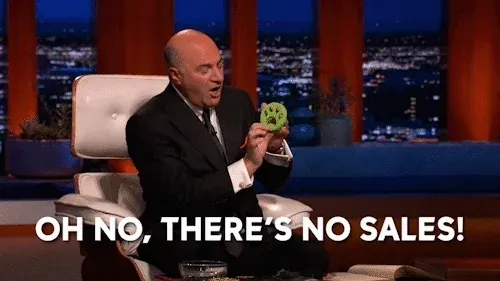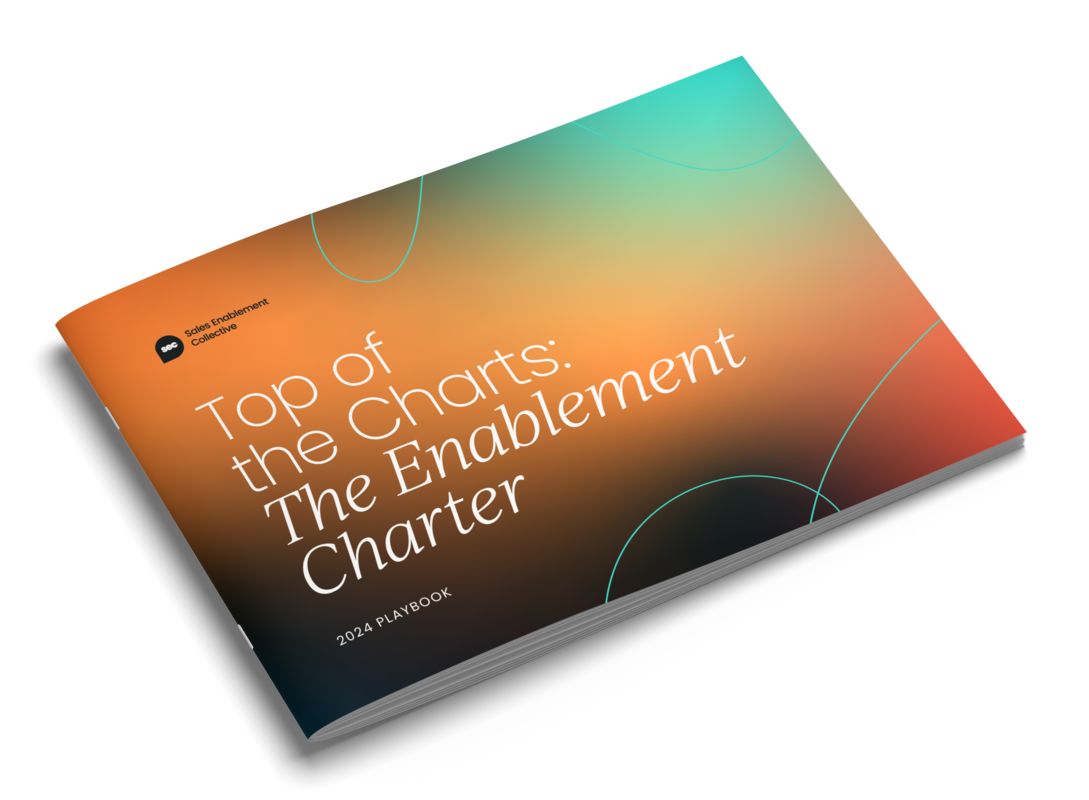The SPIN sales methodology comes from Neil Rackham’s 1988 “SPIN Selling” bestseller. It’s a research-based selling process, created from the study of 35,000 sales calls.
SPIN selling guides sellers through the sales process from discovery to close. It does so by giving them the right types of questions to ask.
SPIN selling is very effective during high-price, complex sales processes. So sales reps need to be both trustworthy consultants and B2B salespeople.
Reps find success by building trust with decision-makers. Asking the right types of questions helps them build that trust.

There’s a reason SPIN selling is a popular sales strategy. It's structured and outlines each step a sales rep needs to take in sequence.
There are many layers to SPIN selling, so in this guide we’ll look at:
- What the SPIN sales technique is
- What the SPIN selling questions are
- How to go through the SPIN selling stages
- How and why SPIN selling works
- Pros and cons of the SPIN sales methodology
- Objection handling techniques in SPIN selling
- Applying SPIN to modern sales cycles
What is SPIN selling?
The SPIN sales methodology has reps ask four types of questions on their sales calls. These give them a good understanding of a prospect’s pain points.
SPIN selling stops sales reps focusing on closing alone. Instead, it puts them into a consultative selling role. In this role, they'll try to uncover the potential customer’s needs.
This allows reps to build trust as the sales cycle goes on. They'll build a relationship with the prospect that pays off down the line and results in sales success.
B2B sales deals are at their most complex right now. So reps have to help prospects navigate that complicated landscape. Throwing a product pitch at them isn't enough.
What are the four types of SPIN selling questions?
SPIN selling helps reps become understanding consultants. It does so by giving them a framework of questions to ask. These fall under the four SPIN categories.
SPIN stands for:
- Situation
- Problem
- Implication
- Need-Payoff
The key with all these categories is to keep questions open-ended. This gets your prospect talking frankly about their organization and needs.
Generally, the SPIN methodology calls for reps to ask questions from each category in sequence. Start with situation questions, move to problem questions, then to implication questions, before capping off with need-payoff questions.
Let’s take a closer look at each letter of the SPIN acronym. We'll analyze each one for how it helps sales teams ask the right questions. We’ll also run through some examples of each type of question.

23 examples of SPIN selling questions
Situation questions examples
Situation questions are aimed at helping the sales rep understand the prospect’s current situation. While asking these types of sales questions, a rep will look to understand the organization’s current processes and how things actually work in that company. Essentially, a rep is gathering context.
Examples of situation questions include:
- What’s your approach to [your product’s use case]?
- What does your role in the company involve?
- What tool are you currently using for [use case]?
- What’s your org’s budget for [problem]?
- What’s your top priority for this quarter/half/year?
- Who in the business is responsible for [use case]?
Problem questions examples
Once a rep has discerned the general situation at the lead’s company, they can move onto the next group of questions.
Problem questions are pretty self-explanatory — they’re all about discovering the prospect’s problem. By asking these questions, a rep can find out whether your product or service could solve those pain points.
Examples of problem questions include:
- Are you happy with [process]?
- What’s your biggest pain point on a day-to-day basis?
- What gets in the way of you achieving [important business goal]?
- Do you think [pain point] is solvable?
- What are your biggest challenges in dealing with [problem]?
Implication questions examples
With your salesperson now acutely aware of the issues the prospect is facing, the SPIN sales model turns its focus to asking implication questions.
Implication questions aim to make the prospect realize how serious the effects from their problem are. By asking these questions, reps drive a sense of urgency and help encourage the potential customer to make a decision quickly.
Examples of implication questions include:
- How does [pain point] impact your ability to hit KPIs?
- Does [pain point] hurt your customer’s experience as well?
- What’s at stake if you fail to solve [pain point]?
- How much time/money is [issue] costing your company?
- What goals or successes is [issue] blocking you from achieving?
- How is [problem] affecting you and your team’s work?
Need-payoff questions examples
The final part of the SPIN sales method acronym is the need-payoff questions. These build on everything the sales rep discovered by asking the right questions in the previous categories.
Need-payoff questions are geared towards helping the prospective customer see the advantages of solving their pain points now (with your product or service, of course!)
If you’ve done the rest of the process correctly, the lead should naturally come to the conclusion that your product or service is going to solve their problem and make their life easier.
Examples of need-payoff questions include:
- What would change if you did [process] differently?
- Would it be easier to achieve your goals with [solution]?
- How much value would solving [pain point] bring to your business?
- How would [solution] help your team perform its day-to-day work?
- What would you do with the time/money [issue] is costing you if it went away?
- What would your work day look like if you didn’t have [issue]?
Quick summary of the SPIN selling questions
To sum up, the SPIN selling questions are situation, problem, implication, and need-payoff questions.
Your sales reps should ask them in order. This prepares the prospect for the need-payoff questions at the end, which help the prospect see that your service is the solution to their frustration.

But SPIN isn’t just about asking the right questions. There’s also a selling process to it.
Let’s run through the four stages of that process.
The SPIN selling stages
So, now you’re familiar with the SPIN questions that sales professionals are using, but it doesn’t stop there.
Just as there are four sets of questions, there are four stages to the SPIN sales method. So, as you read these, think about how they line up with the sequential order you should ask your questions in.
There’s no necessary timeline, either. Sometimes, you might get through two stages in one call, other times it might take multiple calls over a series of weeks or months to reach the final stage. Especially in more complex deals that require more depth than a simple sales pitch.
Stage 1: Opening
The opening stage isn’t about pushing your product or making your sales pitch. Like some of the other methodologies we’ve looked at (such as the Sandler selling system, for example), this first stage is about building rapport and creating a relationship with the prospect.
Don’t bombard your newfound lead with talk about how great your product or service is and how much more efficient it will make their team. Instead, get high-level information that’s relevant to closing the sale further down the line.
These are your situation questions.
If you’re selling a conversational intelligence tool, then try to find out whether the lead’s organization is currently using one, who uses it, who’s a stakeholder in that sort of software, who’s responsible for coaching and analyzing sales calls, how sales training and coaching works at the company, and so on.
A good test for each stage is to imagine you’re selling various products or services, and think about what questions you’d ask. If you were selling CRM software, for example, what would you need to know?
Stage 2: Investigating
Stage two of conducting a successful sales process with SPIN is the investigation stage. Once you’ve created that relationship with the prospect, you build on that trust and integrity by asking your problem questions.
Working to understand your prospect’s pain points will build your credibility further, help you uncover valuable information and context, and qualify the appropriateness of your solution for this prospect.
Sometimes, the prospect won’t just outright tell you their explicit needs, so your reps may have to infer and read between the lines to fully understand the true issues in the organization.
You have to know what roadblocks your prospect and the prospect’s organization are facing before you can start touting your product or service as the solution.

Stage 3: Demonstrating capability
Moving onto stage three of four in the SPIN selling method: Demonstrating capability. At this point, you’ve built a credible relationship with the prospect and understand their pain points.
Now, it’s time to start talking about your product or service, and how it can benefit their organization and help solve those pesky problems. Remember the old saying of "benefits over features" here.
While fast processing times might be a feature of your software, the benefit is that you can get more work done, faster. Your prospect wants to know how it’ll benefit them in their day-to-day work.
In this stage, you’re demonstrating to the prospective customer that your solution can solve the problems you uncovered earlier.
It’s important you don’t rush the previous two stages. A prospect is more likely to view your sales pitch favorably if they have a good relationship with you. Especially if they believe you have their best interests at heart.
This is where both your implication and need-payoff questions can be relevant.
Stage 4: Obtaining commitment
Finally, stage 4 is about obtaining commitment from the prospect (soon to be a customer!). Request a final call with all the relevant stakeholders. Set up a trial period, if you have to, to seal the buy-in from the organization.
To make sure this stage goes smoothly, you have to understand the prospect’s buying process and what’s involved in purchasing a product or service on their end.
Even with all your convincing in steps one to three, a prospect may hesitate to say ‘yes,’ so be prepared to handle all the classic sales objections (more on this in a bit).
If you’ve done it all correctly, you’ll hopefully leave this stage ready to send over contracts, invoices, and all those other important details.
How and why the SPIN selling method works
Okay, we’re familiar with what the SPIN selling methodology involves.
But how does it work? What makes it more persuasive than other selling methods?
First, SPIN selling is research-backed. Neil Rackham and Huthwaite International studied 35,000 sales calls to see what tied the most successful of them together. They also performed a behavioral analysis on the salespeople they studied. They found they could model the success of top-performing salespeople.
The SPIN selling methodology is the result of that research. In short, they found that a more personal approach wins. Only with sufficient context, uncovered through careful questioning and active listening, can reps anticipate and fend off objections. This approach also builds rapport with the prospect, making the prospect more patient and amenable to communication.
“Always be closing” (ABC) sales approaches rush to the end of the selling process. SPIN selling has sellers explore their prospects’ needs, and collect information and context, so they can sell from an informed position.

Pros and cons of the SPIN sales methodology
Nothing is perfect, and that includes the SPIN sales methodology.
Before deciding which approach you should take to your sales team, it pays to know its pros and cons.
Pros
• It’s customer-focused
With its sequence of four question types, SPIN selling encourages your sales reps to focus on the needs of the customer. This leads to reps exhibiting behaviors that put prospects at ease, and make them feel understood.
This rapport pays off not just with higher close rates, but also with stronger retention as a result of the stronger end-to-end customer experience.
• It’s explorative and non-aggressive
Some selling techniques emphasize the sale, and the benefit to the business (the sale, and resulting inflow of cash). People can see through these aggressive approaches, and tend to resent them.
SPIN selling advocates for a different approach. By building a strong understanding of prospects and their needs, reps are necessarily less aggressive. The aim isn’t to get to the close as fast as possible, it’s to build a real relationship and rapport with the prospect.
As a result, close rates are often higher.
• It models studied, successful sales behaviors
SPIN selling is a data-backed approach. If you’re in charge of bringing a unified approach to the way your organization sells, choose a methodology with a track record of success.
SPIN selling is the result of studying 35,000 sales calls, and behavioral analysis performed on the people behind the most successful of those calls.
To boost sales performance, you could do much worse than exposing your sales team to the principles of SPIN selling.

Cons
• It might be more time-consuming than other methods
Close rates can be higher with rapport-based approaches like SPIN selling. But they can also lead to longer sales cycles.
Having four sets of questions to move through before you go for the close takes longer than pitching the product to your prospect and pressing them to make a decision on the call.
For some businesses, longer sales cycles might be unacceptable, even with higher close rates.
• Sales leadership might disagree with the approach
Your sales leaders might not agree with SPIN selling’s less aggressive approach.
The “always be closing” approach is so well-known that some sales leaders swear by it. Plus, some salespeople are naturals, and they learned successful selling behaviors without trying.
Others, however, need to take a more deliberate approach. If sales leaders don’t understand this, they might become impatient with the behavioral change that SPIN selling requires.
What’s more, if a business uses standardized sales scripts, there may be no room for an exploratory approach like SPIN.

• Less appropriate for pre-qualified prospects
If you’re already dealing with highly-qualified prospects who are ready to buy (through extensive lead-warming marketing campaigns and strong advertising), you might be wasting time building rapport with a customer who already feels understood and spoken-to by your brand.
For lower-priced products and services, especially those with strong marketing and advertising campaigns, you might not need the amount of exploration the SPIN methodology calls for.
In fact, since these customers are ready to buy, a more aggressive approach would lead to shorter sales cycles without affecting close rates.
Objection handling techniques for the SPIN sales methodology
Author of the SPIN sales method, Neil Rackham, says there are two types of objections:
- Value-based objections
- Capability-based objections
Prospects make value-based objections when they’re not convinced the value of your product is high enough to warrant its costs.
They make capability-based objections when they don’t think it can help them achieve their goals.
Performed properly, the SPIN selling method prevents objections before they arise.
The only way to deal with objections effectively is to understand what the prospect wants, and what is getting in the way of that.
If you know the prospect’s priorities and frustrations, you can position your product as the fix to their frustrations.
Rackham argues that many reps try to sell too soon.
They don’t have the context they need to really frame the product as the solution the prospect needs. So when an objection arises, their responses don’t speak to what the prospect cares about, or the pain they’re feeling. As a result, close rates are lower.
Remember, the SPIN sales methodology has reps ask plenty of qualifying questions before they try to sell. This has two main benefits.
- First, it helps the prospect realize the value of the solution on their own, before the rep even steps in to persuade.
- Second, it gives the rep enough context to handle objections effectively.
Applying SPIN selling to modern sales cycles
The SPIN selling methodology was first published in 1988. Today, consumers have more choice. Plus, they’ve got the power of the internet to help them research and make their own decisions.
Therefore, it’s even more important to make a good impression on your prospects.
Seeking “first to understand, then to be understood” is part of what makes the SPIN selling methodology work, and can help your brand to stand out amongst the noise.
If you like having a sales methodology that’s simple, structured, and easy to follow, then maybe SPIN is for you.
If you’re researching sales methodologies and don’t think SPIN suits your needs, take a look at our guides to the Miller Heiman, MEDDIC, Sandler, and Challenger methodologies too.
Next steps: Build your enablement charter
Your enablement charter is one of the highest ROI documents you can produce as an enabler. But to make one, you first need to know how.
The Enablement Charter Playbook walks you through:
- Exactly what an enablement charter is (and what it’s not), so you can create one the right way from the start. ✅
- Pro tips and tactics for keeping your charter up-to-date, without it taking you hours a week. ⌛
- An easy-to-use template to give you a headstart in creating your own charter with confidence. 🛠️
The playbook costs you nothing. We just need to know where to send it. Fill in the form to get yours.👇



Sales enablement insider
Thank you for subscribing
Level up your sales enablement career & network with sales enablement experts
An email has been successfully sent to confirm your subscription.
 Follow us on LinkedIn
Follow us on LinkedIn








.svg)